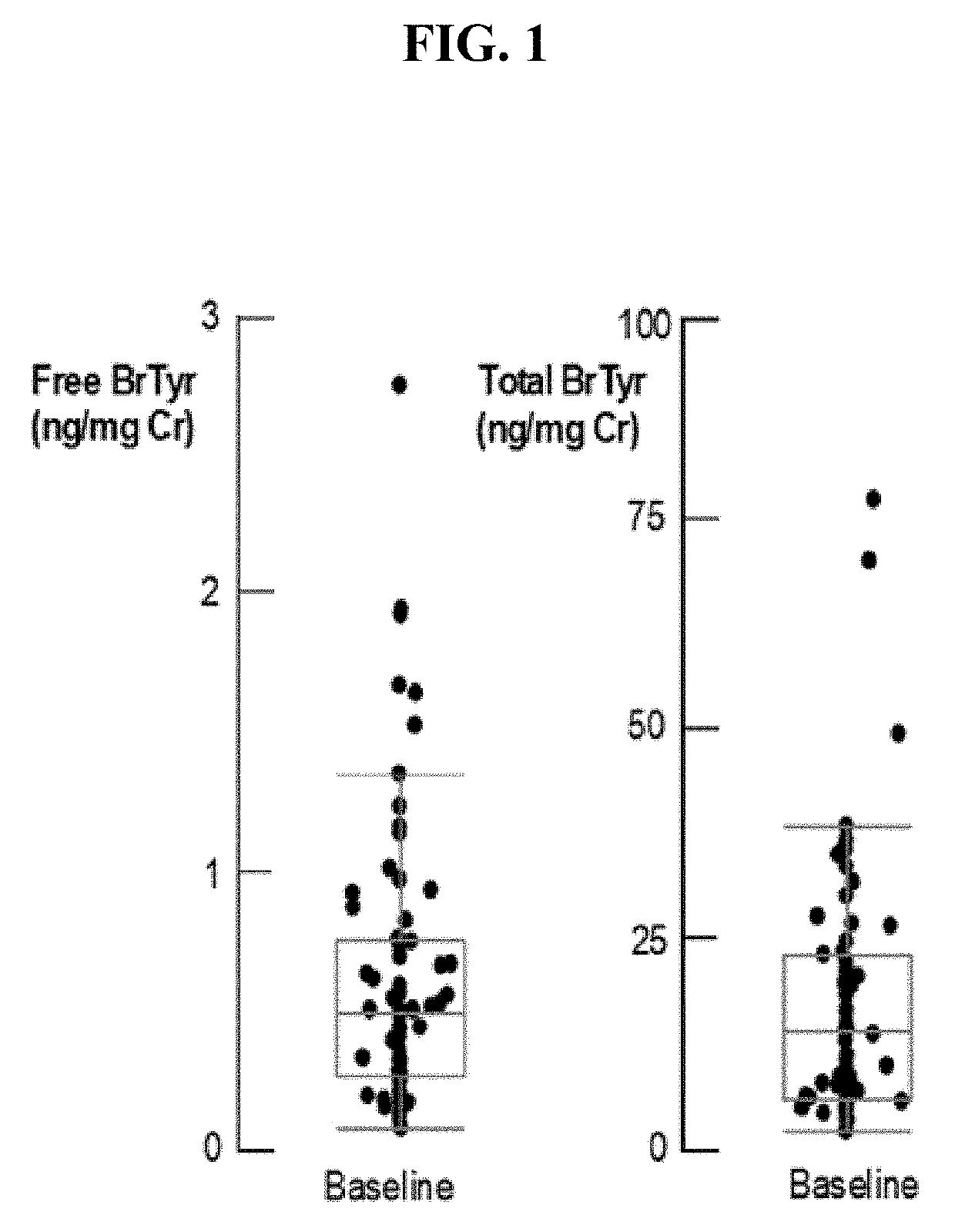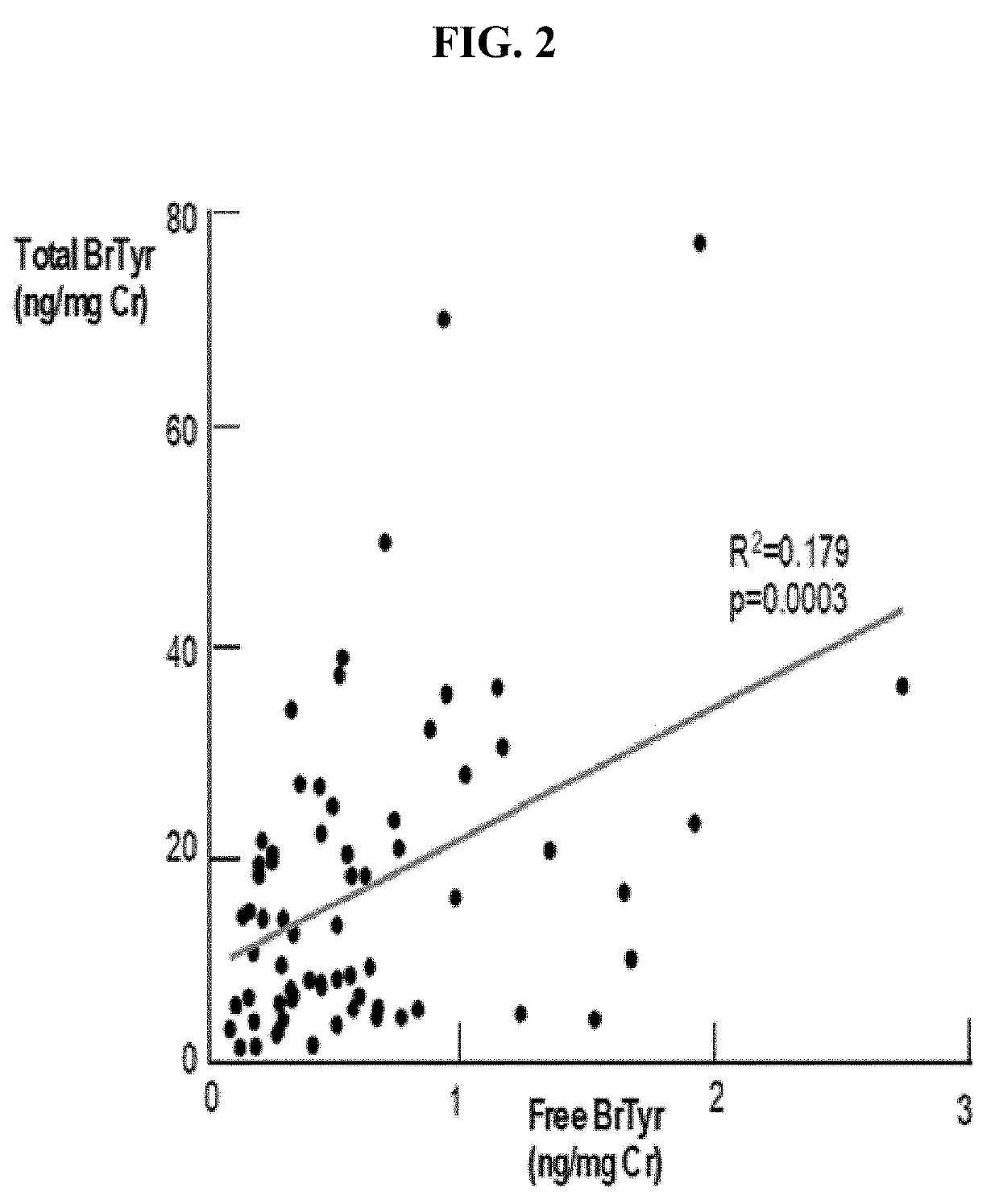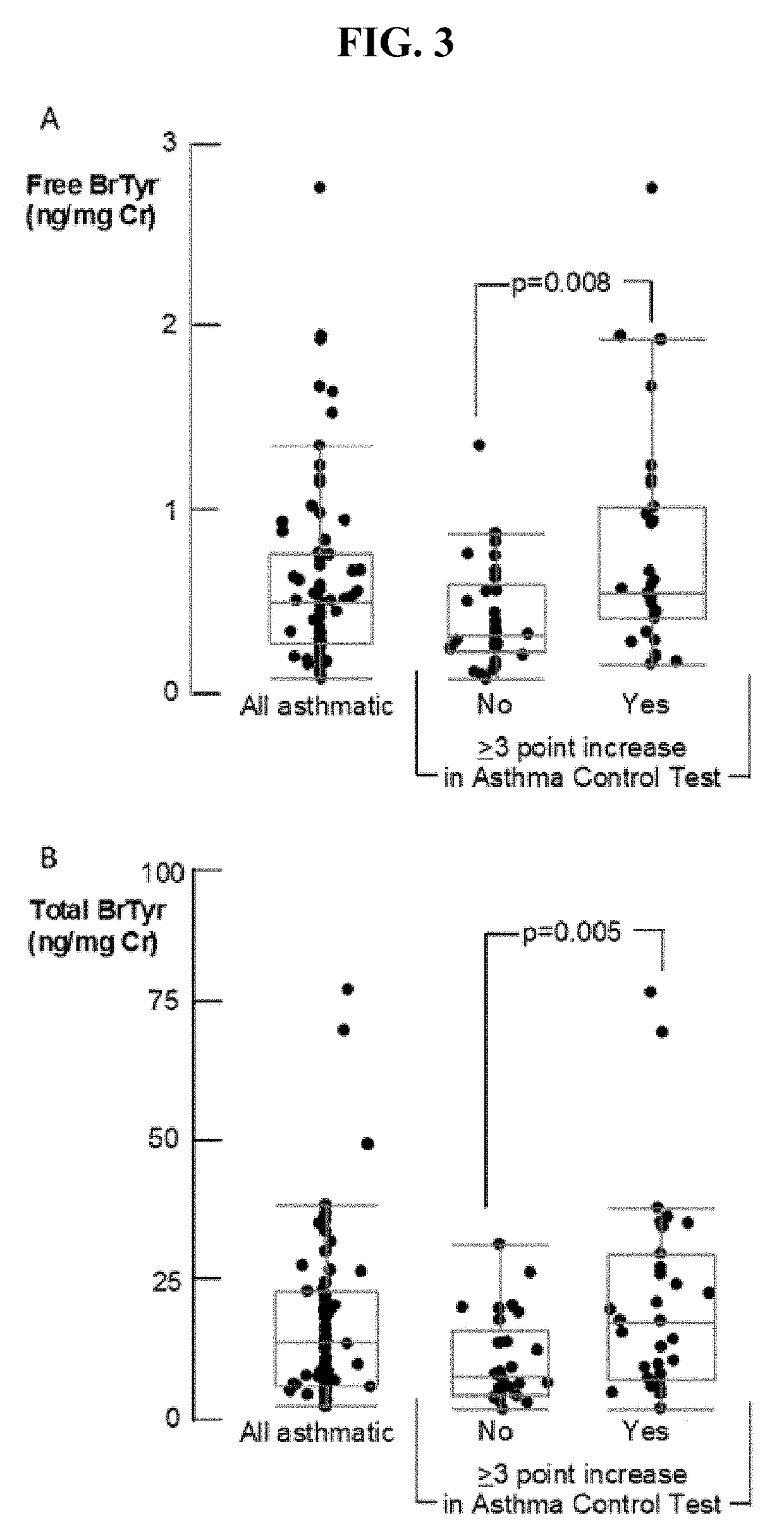Detection of glucuronidated and 3-bromotyrosine
- Summary
- Abstract
- Description
- Claims
- Application Information
AI Technical Summary
Benefits of technology
Problems solved by technology
Method used
Image
Examples
example 1
[0046]Since omalizumab was approved in 2003, biologic therapies for asthma have skyrocketed, with more than 30 drugs in clinical trials and many more in development. The goal is to tailor asthma biologic therapies to specific asthma phenotypes. Given the recent approval of anti-IL5 therapies (e.g., mepolizumab and reslizumab), it is clear that identifying underlying endotypes and clinical phenotypes is essential to assign appropriate therapy.
Methods
[0047]For Urine Free BrTyr:
[0048]200 ul urine was aliquoted into a glass tube with 20 ul 0.5 uM [13C6]-BrTyr and 1 mM [13C9, 15N1]-tyrosine added as internal standard. The urine sample was diluted with 2 ml 0.1% formic acid in water and loaded to DSC-18 3 mL SPE column, previously balanced with 2×3 ml methanol and then 2×3 ml 0.1% formic acid in water. The column was washed with 2×3 ml 0.1% formic acid in water, then eluated with 2×3 ml 0.1% formic acid in 30% methanol. The elute was dried under SpeedVacuum and re-suspended in 100 ul H2O....
PUM
 Login to View More
Login to View More Abstract
Description
Claims
Application Information
 Login to View More
Login to View More - R&D
- Intellectual Property
- Life Sciences
- Materials
- Tech Scout
- Unparalleled Data Quality
- Higher Quality Content
- 60% Fewer Hallucinations
Browse by: Latest US Patents, China's latest patents, Technical Efficacy Thesaurus, Application Domain, Technology Topic, Popular Technical Reports.
© 2025 PatSnap. All rights reserved.Legal|Privacy policy|Modern Slavery Act Transparency Statement|Sitemap|About US| Contact US: help@patsnap.com



